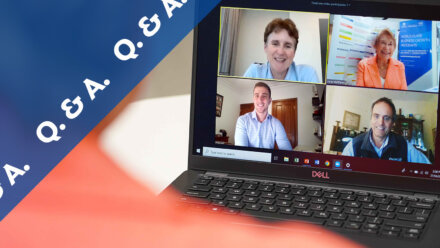
The impact working from home has on your workforce and leadership style
By Dr Jana Matthews | 7 min read.
During the industrial revolution, large scale manufacturing assembly lines created the need for supervision, communication, and quality control. Workers needed to be clustered, so the boss could be sure that they were in the right place, doing the right tasks, at the right time, the right way. The Industrial Age is now past history, but the management model of “Command and Control” still lingers on.
WFH works well for knowledge workers
WFH may actually be the shock needed to change leadership behaviour to a model that’s more appropriate for knowledge workers. Stop thinking that leaders are “the genius with a thousand helpers, telling people what to do and answering all their questions.” Work on your three-year vision and a plan to achieve that vision. Look for employees who share your company’s mission and values, and begin to delegate tasks, projects, and responsibility to them. When they ask you, “What should I do about….”, respond by asking them to tell you what they think they should do, then weigh in. Tell them you expect them to make decisions, then hold them accountable. Help them learn from their mistakes and applaud their good decisions and wins.
We had no concerns about the team at our Centre moving to WFH because we have consistently selected people who share the mission and values and are working hard to enable us to achieve our vision for the Centre. They helped us develop the plan, have a great work ethic, and hold themselves accountable to each other and their own goals. This kind of rigour, respect, integrity, and empathy for each other creates a special kind of esprit d’corps, so a change of work location to WFH has not had an appreciable impact on our team’s productivity.
That said, we have put extra focus on communication, checking each other’s assumptions and repeating back what we understand to be the tasks and priorities at the end of each conversation. Every day, our work teams begin the day with a quick Zoom meeting. Executive team members talk frequently by phone during the week, alerting one another to new developments. We have always had our whole team participate in the planning process, with weekly update meetings where each employee reports on progress against his/her goals. Now we just do that on Zoom rather than in person. Because we share the mission, values and vision, I trust everyone on the team to make good decisions as opportunities or threats arise. Fortunately, we had been practicing all this in a F2F environment, so that stood us in good stead for our new WFH experience.
Discover our Assessment Clinic
Impact on leaders
WFH presents a big problem for people who are “Command and Control” leaders and the companies they lead.
If you have not selected self-directed people who are a good fit with your values and perform at a high level, have not clarified responsibility and accountability, do not have a plan, and do not communicate regularly with your team, then your company’s productivity is likely to drop when they WFH because they will lack the necessary guidance to keep them on track. And you will be anxious because you don’t have control over what people are doing, the decisions they are making, or how they are using their time.
Impact on employees
WHF presents a different kind of challenge for employees. Our home is “our castle”, the place we associate with rest, play and socialising. Few homes are purpose-built for people to work full time from home. So, it can take a day or two for people to figure out a specific room or corner of the house in which to do their work, to make sure they have high speed internet, to negotiate a schedule with their partner for a desk or child care duties. However, after getting settled, many find that WFH actually has some advantages – no commute, casual dress, no need to buy lunch – to name a few.
That said, WFH can be lonely; we miss the social part of working in the same space, the sharing of stories, jokes and laughs in real time. This is why having those regular Zoom and Skype meetings is vital – it’s “almost like being there”.
Is WFH the beginning of a long-term shift
Is this shift to WFH temporary, or is it a permanent change? No doubt all those who own large office buildings are hoping it’s temporary! But when employees are allowed to “come back to work” (there’s that phrase again!), the self-directed ones who have gotten used to being responsible and accountable will expect that to continue, and they will be restive if you return to “Command and Control”. Don’t be surprised if the good ones leave for roles that allow them to work more flexibly.
In short, the long-term impact of WFH is likely to be even more significant for you than your employees, because it will force you to change the way you lead and your perception of leadership! Think of this WFH hiatus as a chance to become a better leader and improve your delegation and communication skills. Spend more time communicating and listening to determine whether your employees understand which tasks are the right ones to be doing, provide support as needed, and tell them you are counting on them to do those tasks well.
Learn more about the programs delivered by the Australian Centre for Business Growth.